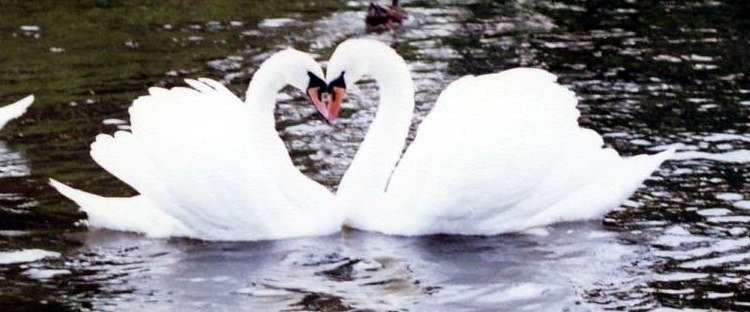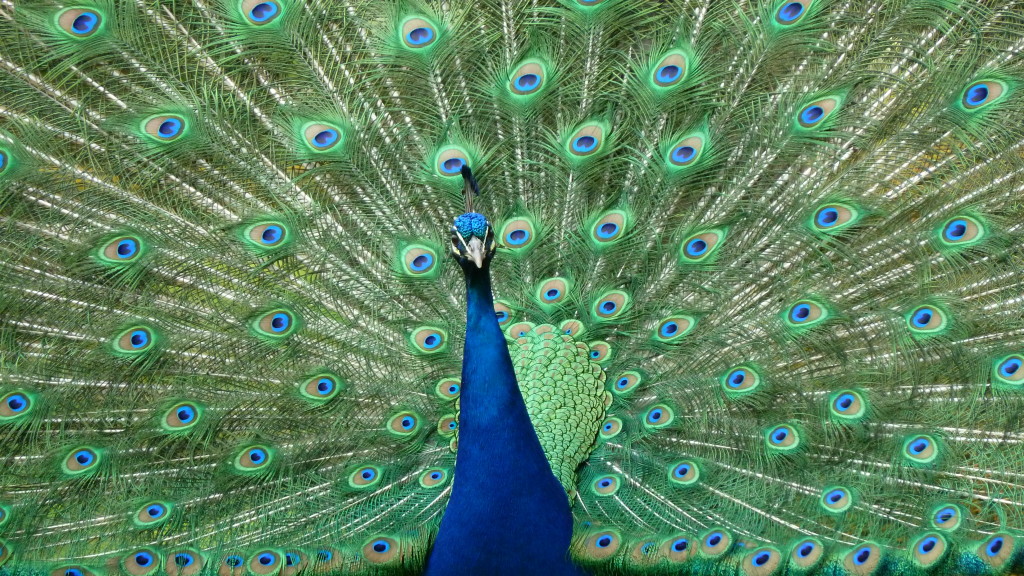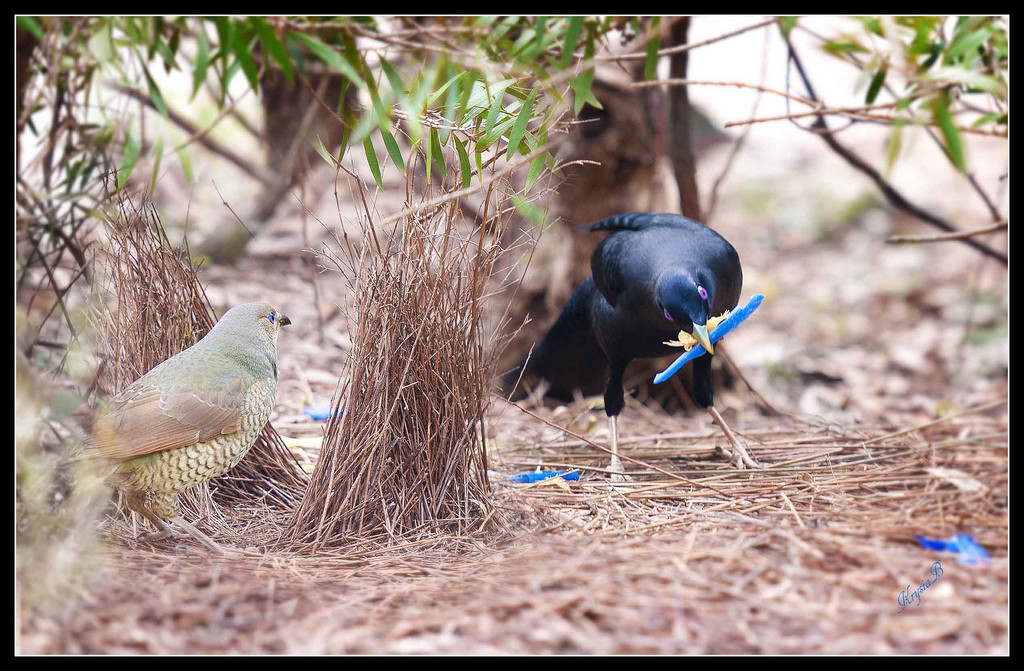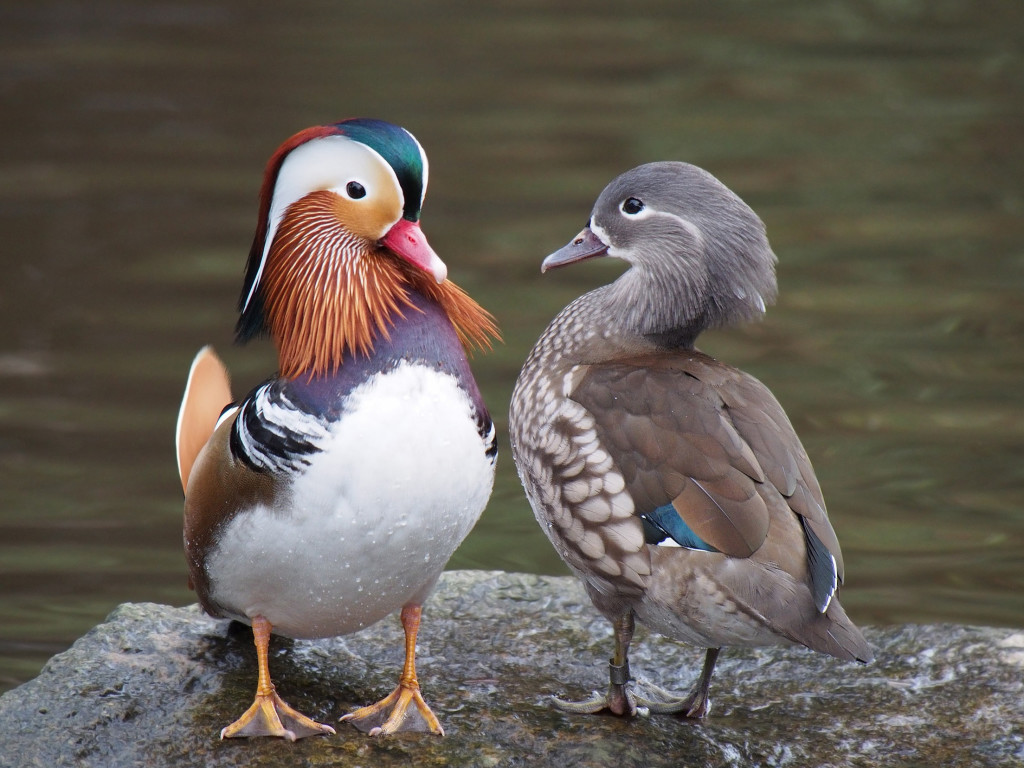It’s a perfectly natural normal thing

Following February 14th, I’ve had time to reflect upon the universal celebration of Valentine’s Day and what it represents – love. This celebration can come in many forms – grand gestures, a candle lit dinner, a shower of gifts; or maybe a combination of all three if you’re lucky.
Working at the basin, love isn’t far from view. Similarly to the picture above, mute swans can be seen gracefully swimming side-by-side, and ducks pair off from within the group for an afternoon of grooming. Watching this behaviour, I couldn’t help but wonder; how similar are we actually to our feathered friends? As it turns out, surprisingly, we are in fact very similar on deep biological and evolutionary levels.
Typically, humans as a species are monogamous. Similarly, about 90 percent of bird species are monogamous, meaning a male and a females form a pair bond and stick together over their lifetime. Approximately 81% of bird species pairs equally contribute to feeding and guarding the offspring. Birds like blue tits, swallows and sand martins share the parenting responsibilities evenly. They both help build a nest, feed the young together, and take turns in protecting the young. This is a common type of parenting in humans nowadays, and the domestic role can now be a choice, to either parent.
Mentioning choice brings me to my next and more crucial point. Before we get to monogamy, we have to find a mate, and for birds, this has a lot to do with just managing to stay alive. Survival is a means towards reproduction, and is only available after getting past the challenge of female choice (Max, 2015). Females throughout nature favour effective males. In biology, effectiveness is called fitness. In other words ‘the statistical tendency across the whole breeding pool to survive and reproduce successfully’. For example, by adapting to the challenges of the environment, the chances of survival will increase.
In the human world, we no longer face imminent challenges of survival that birds do on a daily basis. So for us, ‘survival of the fittest’ doesn’t apply to the same degree as it once did. However, we still are animals, and although there is a lot of mystery and confusion surrounding human love, truth to the fact remains that fit means far more than just being able to do 10 push ups.
Who we have a romantic relationship with is down to choice (and so it should be). Whether birds feel romantic love as we do, is up for discussion, or perhaps a later blog. For now, I’d like to discuss the similarities that we do share with birds, and hopefully give an insight as to why we choose the valentine we do.
Tackling the bull by its horns, I’ll start with a big question – what is love? In the most concise definition I could find, love is the culmination of a complex interplay between biology, cultural, and environmental influences. In other words, it has a lot to do with your natural biological behaviour as a human being; the way in which you were brought up and where; and how interacting with the world around you has shaped and influenced your experiences – past and future. Don’t worry, we’re going to delve a little deeper.
According to Pinker (2008), emotions like love were preserved in human biology because they identify and prioritize goals based on human needs. In other words, emotions appear necessary in order to motivate an individual to accomplish basic tasks – such as feeding, fleeing, defending, and reproducing. Some disagree, suggesting that love is evolutionarily ridiculous and irrational. They suggest that love is a combination of lust and obsession, and those ‘in love’ can be compared to people suffering forms of O.C.D. (Obsessive Compulsive Disorder). I’ll let you decide what you believe.
For the arguments sake, we shall assume that birds are only operating through the primal influence of love, biology. We can never know exactly whether animals feel love in the same way as we do, but what we do know, is that they follow the same basic love driven behaviours – courting displays, sharing resources with one another – food, shelter, etc., and the all-important bond of union, mating.
In humans, most people are fundamentally searching for someone to share their life with. In chic-lit and rom-coms, this person is known as the one. Romantically, this is the person who completes you, who understands you, who makes you feel alive, your soul mate. Biologically, this is the person best suited for you to have babies with. It is biologically hardwired within us, to seek, choose and be chosen by a mate, a suitable healthy effective mate. Because fundamentally, finding a mate is what we were born to do (and how we were born).
Females are consciously and subconsciously assessing certain things about a male when considering him for a mate:
- Does he carry good genes
- Will he be a good partner
- Will he be a good dad
It could be one, two or a combination of all three, or it could be none of the above, depending on her age or experience. But typically, the healthy human female is considering these three factors when you’re introducing yourself, even if neither of you know it.
I’m going to follow that structure, and show where I can where the two species cross paths – considering the importance your genes, or your ability to be a partner or a dad.
Let’s start at the top – good genes.
In many of the bird species, females only pay attention to just one thing, one key sexual ornament that can sum up the male’s genotype and phenotype. In the bird kingdom, one species stands out for me above the rest – the peacock.

According to Darwin, the peacock’s tail is probably the most famous example of sexual selection. It has one sole purpose – to attract a female. The exquisite abundance of extravagant detail aims to catch the females gaze, which according to the Journal of Experimental Biology, is difficult. The peacock’s tail provides no benefit to the bird against a predator, and if anything hinders its chance of survival. When courting a female, the male extends and exposes its grand tail, requiring a lot of energy. This shows the female two things.
- The bird is fit, he is healthy; therefore, he has good genes.
- The bird has a colourful extravagant tail; therefore, he has good genes.
Imagine how demoralizing it would be to have only a mediocre tail? It’s hard to fake good genes and health, and the peacock cannot enhance his display by stealing feathers from another. In nature its survival of those the fittest and those with the best genes; and to a degree, the same applies in the human world. Humans want a healthy, intelligent, attractive partner, who is likely to pass on good genes to their children, increasing their chance of survival. That’s the simple biology behind it.
The second and the third – partner and father ability – come under the same discussion, as one becomes the other once young appear.
Different female species look for different qualities or skills in males. Male hawks can offer a variety of fish, crabs and mammals for mother and young; Red-crowned cranes are well-known for their carefully orchestrated courtship dances; Bee-eaters engage in courtship feeding, helping to keep the female and her eggs healthy; to the grand puffing red chest and distinct love song of the male frigate bird, appealing to both the eyes and the ears of the female.
In some species, demonstrated performance is a must if a male is attract a female. The signal of some male bird’s suitability as a mate is seen in the skill of building a nest, in which he invests a huge amount of effort. Male European house wrens build up to 12 nests to attract a female, and will continue to build and perfect their craft until chosen. The male satin bower (famous from Sir David Attenborough shows) creates a beautiful nest display to charm the female. These birds find colourful items found near the nesting site, ranging from twigs, to berries, to colourful stones – all meticulously placed.

From the female bird’s perspective, the survival of her young is paramount; therefore the nest with the best display of security will not only win her heart, it will win her young.
This is exactly transferable to the human world. Women want effective men. If you have no way of demonstrating how and why you would be an effective partner or father, then you have little chance of attracting a female.
Finally, Adelie Penguins display a perfect example of the equivalent of one of our grandest gestures. Female Adelie Penguins live in small nests made of stone, and therefore it is of importance to her to be surrounded by carefully selected stones. During courtship displays, the males attempt to win over their chosen females with a single carefully chosen stone. This stone is a gift, intended to enforce the bond between the pair. Doesn’t that sound familiar? What is given when a human pair wishes to sanctify their bond? Did someone say…Tiffany’s?
The similarities are clear watching birds. We as animals are all seeking a mate. Perhaps you were like me and spent this Valentine’s Day by yourself. Don’t feel down. You are not alone. In the wise and simple words of my father (I’m sure the birders among you will appreciate this):
“There’s plenty of birds out there. You’ve just got to find them.”

Benedict George Murray, Montrose Basin Visitor Centre Assistant
References:
Pinker, S., 2008, Crazy Love, Time Magazine, New York, Time Inc, January 28, 2008.
Max, T. and Miller, G., 2015, Mate: Become the man women want, Little, Brown and Company, New York, Boston, London
Love as an Evolutionary Adaptation, online resource – http://serendip.brynmawr.edu/exchange/node/2442
Help protect Scotland’s wildlife
Our work to save Scotland’s wildlife is made possible thanks to the generosity of our members and supporters.
Join today from just £3 a month to help protect the species you love.
Preface
Following February 14th, I’ve had time to reflect upon the universal celebration of Valentine’s Day and what it represents – love. This celebration can come in many forms – grand …
